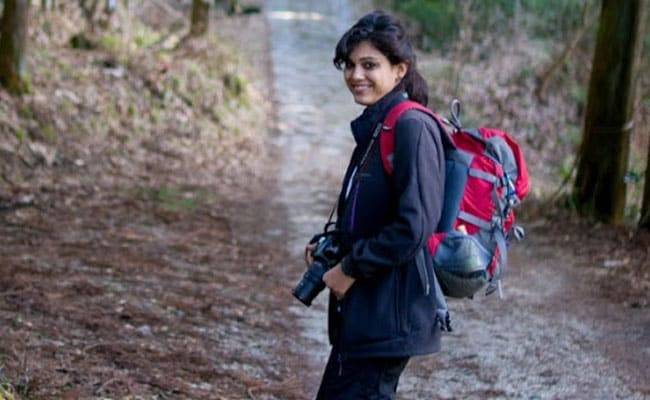
With an aim to closely understand wildlife and human behaviour, Himani Nautiyal started her journey in the Mandal Vallery of Uttrakhand in 2014.
While she started observing animals and their response to the surroundings, along with that she also interviewed the locals to understand their socio-economic status, for example - who is majorly dependent on their cattle to earn a living by selling milk.
Himani said – “The forest acted as the main feeding land for the cattle and hampered the quality of the forest, resulting in the wild animals making their way towards the fields. Hence, my projects revolved around the betterment of wildlife, forest, and easing out the Himalayan household income source.”
Her curiosity for wildlife and the forest made her pursue a career out of it. Presently, to help the women's self-help group of Rudranath Mahila Gram Sangathan, Uttarakhand she is raising funds to elevate their living status.
Himani is born and raised in a village in the Indian Himalayas, so she is well-versed with the life of people living there in such a challenging landscape. Lack of exposure and rigid patriarchy did not let local women in the village receive a quality education.
Wildlife research is an uncommon concept and a challenge for women to work in the forest alone, especially as a wildlife researcher, but her family and her supervisor kept motivating her throughout her journey.
Being a B.Sc graduate in Forestry from HNB Garhwal University, Uttarakhand, Himani pursued an M.Sc. in Wildlife Biology from Tamil Nadu's Bharathidasan University. Further, he received her PhD in Primate Behavioral Ecology from Japan’s Kyoto University.
She recalled – “When I went to the Mandal Valley for the first time, people were very supportive. As time passed it became to make people understand that I’m not only supporting the wildlife but also working for the betterment of the village. It became really important to make them believe in my work and to treat both wildlife and humans equally.”
By seeing all the appropriate aspects like suitable climate, high market value, no damage by wildlife and a very little requirement of labor work, Himani found Kiwi cultivation as an ideal solution to the problems. Himani’s kiwi cultivation focuses on conserving the wildlife and providing a stable income source for the women farmers. She said – “if I can, then other rural women also can. I believe, they would be an idol for thousands of rural women in India.”
Since her project didn’t fit in the international grant ideas, Himani resorted to crowd funding on ImpactGuru.com. Every structure for kiwi farming costs between Rs 50,000 – Rs 60,000, which is an ideal income for a single-family. Himani explained – “As we want the structure to last for 60 years, the material used is made of iron which will increase the cost of production. We target about 50-60 women farmers to support. However, it may fluctuate according to the funding received.”
“Women received very little for their efforts and do not obtain the right financial backing from men. Additionally, women in India are not recognized as farmers, thereby having less access to land, loans, and machinery than men” she said. Overexploitation of women is one of the key issues in the Himalayas. The entire domestic and agricultural work is done by women, including the collection of grass and firewood from the challenging Himalayan forests. Farmlands are frequently destroyed by the wild animals, despite that these women follow the traditional agriculture system, which requires high labor work, but in turn see insufficient food production.
Rudranath Mahila Gram Sangathan - a self-help group (SHG) of women farmers provides a proper economic foundation to start businesses cooperatively and helps them bring a peaceful coexistence between people and wildlife. All the funds raised are invested to support these women farmers to start their organic kiwi fruit farming business.
“This will eventually ease out the farming process for all women. It is also a safer option as it will save the crops from wild animals. Post the development, I would like to record the documentary for the women farmers and portray the success stories of these women, which can be inspiring to others” she said.
In the next three-four years, Himani is planning to make kiwi fruit farming a stable source of income for all women farmers, which will develop the Mandal Valley into a kiwi farming area.
















